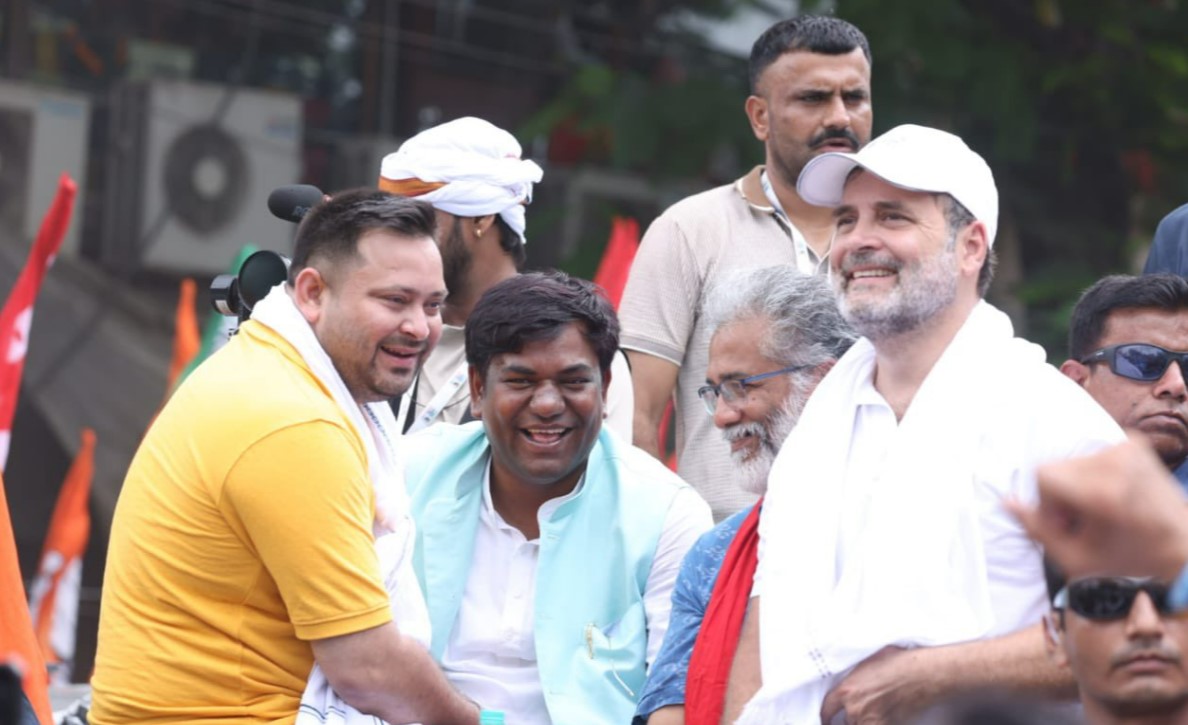The seat sharing within the Mahagathbandhan (Grand Alliance) for the Bihar assembly elections 2025 has become a hotbed of negotiation, tension, and strategy as parties look to carve out their best prospects amid new realities and old ambitions. The drama, for now, looks to grow more and more interesting.
The Mahagathbandhan chessboard
The Mahagathbandhan brings together an even broader spectrum than in 2020, with the Rashtriya Janata Dal (RJD), Congress, CPI-ML, CPM, Vikassheel Insaan Party (VIP), Rashtriya Lok Janshakti Party (RLJP/Paras), and Jharkhand Mukti Morcha (JMM) in the fray. The entry of new allies like JMM and RLJP has made seat negotiation more complex, forcing major parties to reconsider previous formulas and make way for smaller partners seeking influence.
What each party wants
RJD: Traditionally the powerhouse of the alliance, the RJD has staked its claim as the senior partner. Tejashwi Yadav’s bold statement to contest “all 243 seats” is widely seen as a tactical maneuver to assert leadership and bargain from a position of strength, though party leaders clarify that it means leading the front, not breaking the alliance.
Congress: The Congress resists any reduction below the 70 seats it contested in 2020, arguing that its statewide reach and recent electoral efforts (like Rahul Gandhi’s “Voter Adhikar Yatra”) warrant a respectable and ‘winnable’ share and that seats lost by large margins should be redistributed.
VIP: Mukesh Sahani has become the loudest voice at the table. By demanding 60 seats and even the Deputy CM post, Sahani is testing how far he can push. Few expect he’ll get close to that number, but his community base and aggressive positioning have made him difficult to ignore.
CPI-ML: Drawing on past performance, CPI-ML seeks not less than 40 seats, while CPM and CPI are also angling for better representation.
RLJP (Paras) & JMM: Their recent entry has added to the scramble, with their bargaining focused on gaining a credible foothold, especially in constituencies bordering Jharkhand or where Dalit-Muslim votes can be decisive.
Probable combinations and permutations
The current scenario suggests several likely formulas:
RJD: 130-150 seats (down from 144 contested earlier; pressure to accommodate new partners but unwilling to dip under 150 in bargaining).
Congress: 60-70 seats (under pressure to accept fewer seats but bargaining for not below 70).
VIP: 20-30 seats (unlikely to get its demand of 60 but aiming for at least the same as last time).
CPI-ML/Left: 30-40 seats combined.
RLJP (Paras): 15-20 seats.
JMM: 5-10 seats.
This would account for the increased number of alliance partners, though the final list is subject to ongoing negotiation and regional seat swaps for winnability.
Leaders’ views and negotiation drama
Tejashwi Yadav (RJD) remains central to the alliance’s strategy, projecting himself as the CM face and using dramatic claims (“contest all 243 seats”) to bolster bargaining strength while keeping doors open for unity.
On the other hand, Congress State President Rajesh Kumar has insisted on upholding party dignity and points to the need for all to “sacrifice their share” to accommodate newcomers, but Congress strategists emphasise winnable seats, meaning past performance will weigh heavily.
Mukesh Sahani (VIP), emboldened by increasing community mobilisation, pitches for an outsized share, adding flavour and unpredictability to the coalition arrangement.
The human side of the political puzzle
Behind these numbers is genuine anxiety and hope, local leaders and workers worry about being sidelined or losing ticket prospects, while community groups jostle to ensure “their voice” gets a seat at the table.
Memories of previous bargains, heartbreaks over missed margins, and the hope for a “turning point” drive negotiations late into the night.
Ultimately, the 2025 seat-sharing deal, however complex, will reflect more than just arithmetic, as it will showcase the dreams and demands of millions who see their future shaped by who gets to contest, and win, in their assembly.
